Mayan themes for education

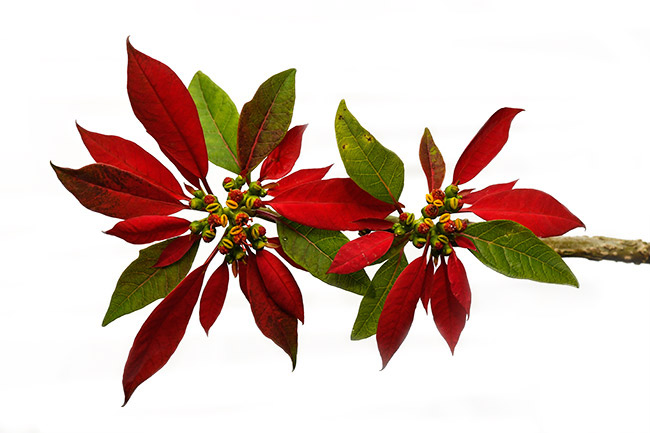
Poinsettia flowers
Every supermarket has entire sections of poinsettia flowers every Christmas. Their origin is from northern Mexico. But there are also wild poinsettia flowers in ravines and remote areas of the Highlands of Guatemala. It’s likely that over 80% of people who buy poinsettia flowers have no idea where they come from and even in Guatemala not many people realize they are native here.
Keep in mind the bright red “petals” are really red bracts: the actual flowers are the tiny yellow structures barely visible in the center.
Aguacate
People in the United States often assume that their avocados come from California. However, the reality is that they are native to Guatemala, with many species and relatives in north-central Baja Verapaz and adjacent Alta Verapaz. They are also found in Mexico and elsewhere. This context helps kids and parents in the USA and in Guatemala understand the true origins of what they eat.


Cacao
Cacao is wild in many parts of the Amazon plus parts of Colombia, Ecuador, and Peru. In these areas it is common for people to eat the soft white tasty pulp. But in Honduras many thousands of years ago the local people were drinking chocolate-like concoctions made from the seeds. So were the Olmec, Maya, and the infamous Aztec emperor. The cocoa you may buy today is from seeds grown in Africa but their origin is Soconusco in Chiapas, adjacent Costa Sur in Guatemala, adjacent El Salvador and Honduras on the Caribbean Sea. Since chocolate is such a globally popular food, it is important to create educational materials for kids to understand the origins of this special food.
ome existing literature does exist, from authors like Sophie Coe who is known for her book on all the foods of the Aztecs, Maya, and Incas. James (Jim) O’Kon has recently produced a book on native plants of the Maya which are eaten around the world.
It may surprise you that wheat does not come from the Americas nor Europe; potatoes come from Peru (not from Ireland). Our books promote awareness of all the tasty, healthy foods eaten in the EU, the Middle East, Africa, Canada and the USA that comefrom Mexico and Guatemala. These local Mesoamerica foods have kept the Olmec, Teotihuacan, Toltec, Mixtec, Zapotec, Aztec, and Maya people healthy and well fed for thousands of years.
Sophie Coe is known for her book on all the foods of the Aztecs, Maya, and Incas. James (Jim) O’Kon has recently produced a book on native plants of the Maya which are eaten around the world. Both books are worth buying.
Wheat does not come from the Americas nor Europe; potatoes come from Peru (not from Ireland). Let’s learn all the tasty, healthy foods eaten in EU, Middle East, Africa, Canada and USA that comes from Mexico and Guatemala. These local Mesoamerica foods kept the Olmec, Teotihuacan, Toltec, Mixtec, Zapotec, Aztec, and Maya people for thousands of years.
Books to help improve the health of everyone: in Guatemala, Mexico, Honduras and the rest of the world
If you eat grains, green leaves, roots instead of salt-filled, sugar-filled junk food, your health will improve noticeably. We at FLAAR (USA) and FLAAR Mesoamerica (Guatemala) have been working on making lists of every single edible flower, stem, stalk, root, fruit, nut, vegetable of trees, bushes, vines and other plants of Guatemala.
Every month we find another native fruit or edible plant that is missing from books on Mayan agriculture, food, etc. Our series of publications including FLAAR reports for scholars, students, and interested lay people, and MayanToons for children, have the results of studies from our entire team.
SuperFoods: improving the health of the Maya, Xinca, Garifuna and the entire world
Quinoa is the superfood of the Inca civilization of Peru. Amaranth is the superfood of the Aztecs of Mexico. Wow! It turns out there are many species of amaranth native also to Guatemala. Plus, the fresh leaves of amaranth (locally called bledo) aare also a superfood. Amaranth seeds are a great breakfast food, and bledo can be eaten for lunch or dinner.
We have worked this entire decade to make a list of all edible plants of Guatemala. We will also be developing a list of edible plants in the area of Yaxha in Petén
Cookies, cake, and chips are delicious! But they contain high levels of sugar, salt, and chemicals that train us to desire more junk food. But there are more natural, healthier alternatives. Plant-based products like leaves and root crops are excellent choices. For example, camote (sweet potato) is native to the area and very nutritious. There are even edible flowers, vines, and bushes that grow here. Our goal is to help everyone know that healthy food choices are also available.
Books on every major species of tree, flower, plant (especially edible or utilitarian plants of Mexico, Guatemala, Belize, Honduras)
We also research useful plants. For example, around the world the tonnage of plastic garbage is staggering. The ancient Maya and Aztec had no plastic. So how did they wrap everything? The secret: plants!
To find out more, we go out to the remote villages and we study how things are wrapped where the grandmothers are seated selling their products in traditional markets.
Once we learn what is used (mainly giant leaves of heliconia and mashan (maxán) plants), we bring these plants back to grow them in our FLAAR Mayan Ethnobotanical Research Garden. Now our illustrators, animators, and graphic designers have the plants in front of them to do create their books and animated videos for kids.
We are working on making a list of every usable plant. Which makes soap, which provides material with which to weave baskets, and which tree provides a fruit large enough, and hard enough, to serve as a plate or bowl (instead of plastic). We have documented how it is possible to scoop out the seeds, cut the large fruit in half, and it dries to a hard bowl permanently. When we go to remote villages, and when the local people offer us a cacao drink from their local trees, the beverage is served in the same identical bowls that the Maya used 2000 years ago (yes, of course the Maya royalty had ceramic plates, bowls, and cups; but the poor people out in the mountains used bowls made from tree fruits of Crescentia trees.
From this research we have lots of first-hand information to put into our MayanToons books and animated educational videos.
Books on all the fascinating friendly insects: Butterflies, Moths, Beetles
Many people love lady bugs, but did you know about the carnivorous habits of these “cute” insects? There is so much to discover in the world of beetles, butterflies, and moths, many of which are pollinators.
Although butterflies are colorful and diverse, there are actually more species of moth than butterflies. Many moths also have incredible colors and body structures. Our books explore the insect world and bring readers closer to these fascinating creatures found in Mesoamerica
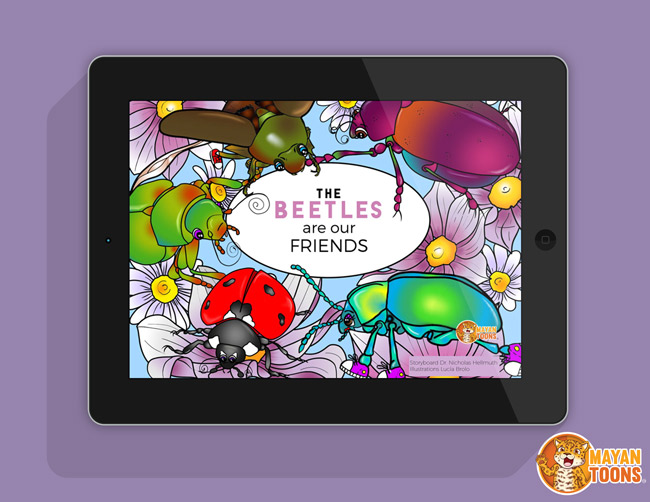
Books about pollinators (for kids, parents, grandparents)
Bees, butterflies, and hummingbirds are the most commonly known pollinators. But there are also other insects that may serve as accidental pollinators as they come in contact with blooming flowers. More research needs to be done on certain species of grasshoppers that may be pollinators!
Bats are also pollinators around the world; in Guatemala there are endless variety, size, and kinds of bats that love to drink nectar, especially of the flowers of the national tree, Ceiba pentandra.
Our goal is to make a list of every insect, mammal, and bird that serve as pollinators. These are vital species worth protecting, and our publications help to educate new generations on their importance
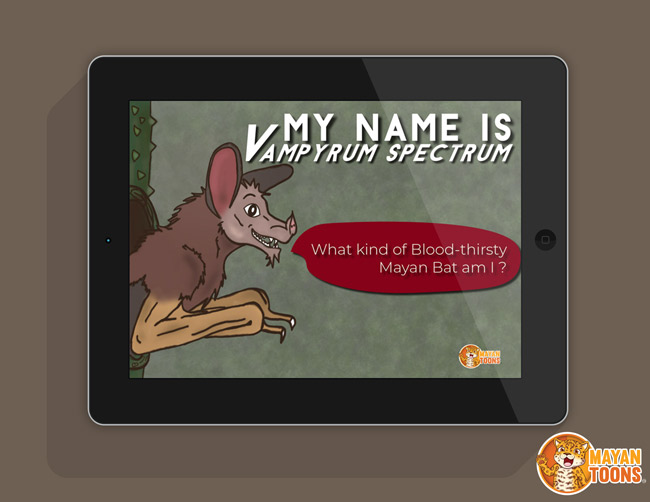
Books to help children learn not to kill animals, trees, insects, etc.
In our work, we have noticed a tendency to fear and kill animals that are percieved as dangerous, even though they are harmless when given space. For example, people may believe that snapping turtles are venomous because they bite when bothered and the bite becomes infected. Or tarantulas may be killed on sight, even though they don’t attack unless threatened. Wasps are another common species that are needlessly killed even though many are pollinators. Our goal is to educate people to care for these species and give them the space they need, so everyone can live safely with nature.
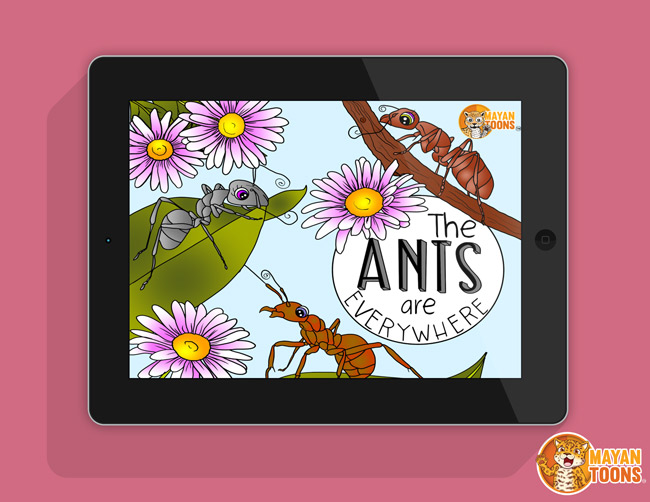
Books on Birds: incredible nest builders (and pollinators)
We are interested in the “architecture” and engineering of the meter-high (sometimes over 36 inch high) pendant nests that hang from giant Ceiba trees throughout Guatemala, Honduras and elsewhere. We study oropendolas, caciques, and orioles that build large hanging nests. This includes lots of field work collecting photos and information to then pass on to our publication team, who create wonderful books to inspire children about these amazing nest-builders! Pollinator bird species are also featured in these books, since they play such a key role in ecosystems.
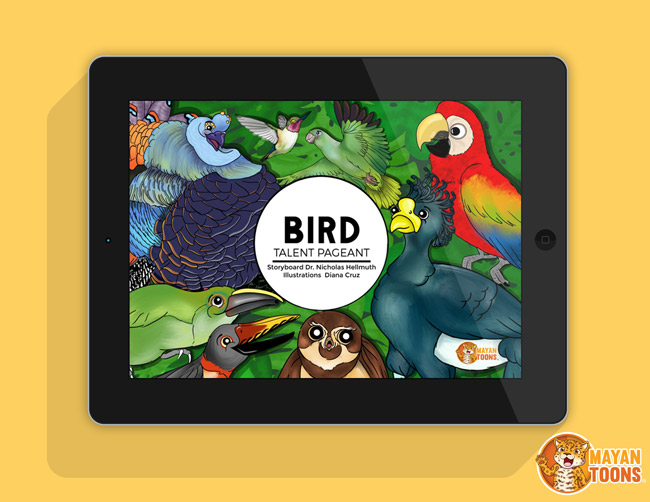
Books on Waterbirds, Birds of Prey, Vultures
Colorful songbirds are immensely popular for bird enthusiasts to study, but we believe that appreciating the true diversity of birds is important. We want to focus our publications on large waterbirds, birds of prey, and even amazing vultures like the King Vulture. These large species are important members of any ecosystem community, and our books help to educate people on this importance.
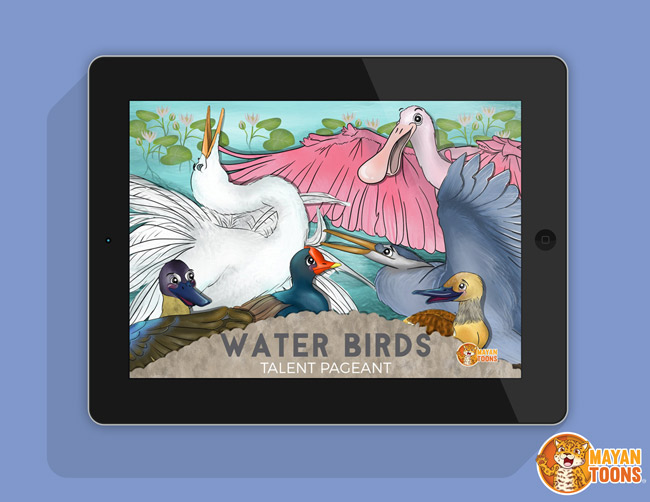
Books to learn ethical family values and the protection of fragile ecosystems
Violence is featured on TV, in movies, and in video games. We at FLAAR Mesoamerica feel that books and animated videos should support family values, ethical values and motivate kindness and cooperation. Our books inspire readers to take action to protect their communities and the nature around them. Our experience creating the Yaxha Nakum Naranjo National Park in Petén has motivated us to inspire future protectors of vital ecosystems.

Importance of educational videos
We recognize the importance of digital content in learning, and that’s why our capable team of university trained animators are creating videos about the remarkable native animals in Peten seasonal rain forests.Other videos focus on learning ABC’s with a nature focus.
As soon as we find an animation company or a university animation department that wishes to partner with us, our storyboards can be used to have animated video series viewed worldwide.
Adventures in the rain forests: Dr. Hellmuth’s story
It is an adventure to be in a Neotropical rain forest or any of the diverse ecosystems of Mesoamerica. Because of Dr. Hellmuth’s extensive experience in many of these ecosystems across the area, he is an excellent person to lead the creation of related environmental education content. There is even an ongoing project to develop his autobiography into a future digital production.
First posted August 2018. Updated June 2025
